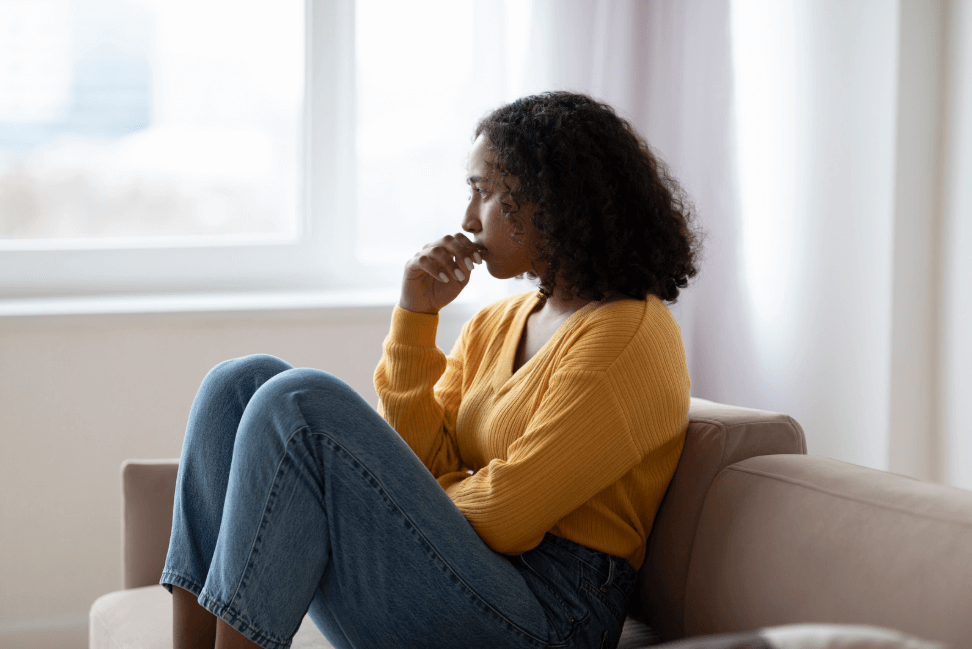How to Overcome Codependency

Do you ever feel like your happiness depends completely on someone else’s well-being or approval? This is a common sign of codependency. Codependency manifests in relationships when you heavily depend on another for support. Overcoming codependency begins with awareness. When you can distinguish between codependency and health dependency in your relationship, you can lay the foundation for a balanced relationship where you and your partner can thrive.
What is codependency?
Codependency refers to an unhealthy relationship dynamic where one person, often called the “giver,” consistently puts the needs and desires of their partner ahead of their own. In this dynamic, the giver’s self-worth becomes tied to being needed, which can lead to burnout and resentment. While codependency is most often associated with romantic relationships, it can also be seen in friendships and family relationships, such as between parent and child.
Codependency can cause significant emotional distress and negatively impact the well-being of the partner in the giver role. Recognizing the signs of codependency is the first step toward achieving a healthier, more balanced relationship dynamic.
Signs of codependency
Signs of codependency can vary, but the most common signs are:
1. People-pleasing
- A constant need to please others, even at the expense of your own well-being.
- Difficulty saying “no.”
2. Difficulty setting boundaries
- Struggling to set or maintain healthy boundaries in relationships.
- Feeling guilty or anxious when prioritizing your own needs.
3. Low self-esteem
- Deriving self-worth from being needed by others.
- Feeling unworthy unless you’re helping or taking care of someone.
4. Clinginess
- Spending excessive time and energy worrying about or trying to fix others’ problems
- Neglecting your own needs to prioritize someone else.
5. Fear of abandonment
- Staying in an unhealthy relationship out of fear of being alone.
- Avoiding conflict to prevent someone from leaving.
6. Emotional dependency
- Relying on someone else for your emotional fulfillment or sense of purpose.
- Feeling anxious or lost when the other person is unavailable or upset.
7. Suppressing emotions
- Avoiding expressing your own feelings, especially negative ones, to “keep the peace.”
- Struggling to identify or prioritize your emotions because you’ve overly focused on others.
8. Need for control
- Attempting to control others’ behaviors, often out of fear or a need for stability.
- Believing you know what’s best for others and feeling personally responsible for their outcomes.
Causes of codependency
Codependency often has deep roots in early family dynamics. A few examples of early family dynamics that can lead to codependency include if a child:
- Grew up with a parent or guardian who struggled with addiction or was either overly protective or neglectful
- Feels pressure to meet their parents’ expectations
- Lacked affection or was denied opportunities to develop independence
- Felt undeserving
- Was overprotected or limited
How to become less codependent
While unhealthy patterns, like codependency, can show up in your connections with others, acknowledging them is key to healing. If you feel as though you may be showing signs of codependency in your relationship or relationships, here are a few tips to overcoming codependency:
- Explore childhood dynamics and identify any unhealthy patterns that may be showing up in current relationships.
- Have an honest conversation with the other person to address your relationship dynamic together and explore ways to create a healthier balance.
- Establish and maintain boundaries.
- Make time of personal interests outside of the relationship.
- Work with a therapist who can provide the support you need to navigate this process.
Breaking behavior and thought patterns can be challenging. If you’re struggling with codependency, a licensed therapist can help. A licensed therapist can help you identify unhealthy relationship patterns, explore root causes, and identify actionable solutions. At findmytherapist.com, you can browse hundreds of in-network therapists and hand-pick the best fit for you. Once you’ve chosen your therapist, you can pick a day and time and schedule directly online.
Ready to prioritize your mental health?
Great Lakes Psychology Group is here to help. With an extensive network of caring therapists available to meet online or in-person, we make it easy to find the right fit for your unique needs.




